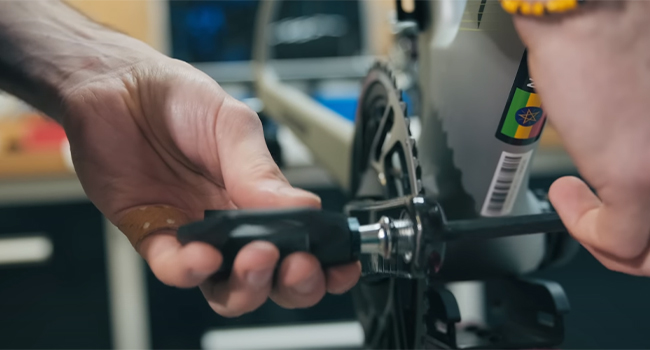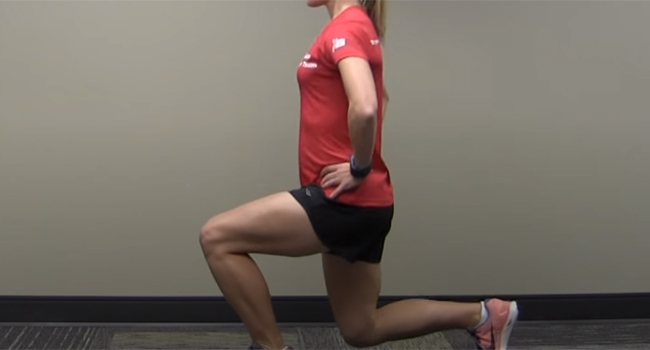The hamstring muscle may cause upper thigh pain while pedaling. However, it’s essential to recognize that sometimes, such discomfort could signify a more serious issue, such as a blood clot. Your upper thigh should be evaluated for aching, burning, or pain.
Cycling can also cause inside thigh and upper inner thigh pain if you keep a lousy posture. A wrong position is reaching out too far. A bruised groin can result from placing significant weight on sensitive tissues.
This blog is about the causes and prevention of upper thigh pain, helping you pedal towards a pain-free, exhilarating cycling experience.
Upper Thigh Pain During Cycling: 4 Recovery Steps
Physical exertion and mental strength are a harmonious combination that can sometimes be disrupted by discomfort in the upper thighs. Performance and enjoyment on the bike can be enhanced by understanding what causes this pain. Here are the key reasons behind upper thigh pain during cycling and how to address them.
Bike Fit

Central to the cycling experience, bike fit plays a crucial role in determining the rider’s biomechanical alignment and comfort on the bike. An improper bike fit can lead to excessive thigh tension, causing pain and discomfort during and after rides.
It’s easy to adjust the saddle height, handlebar reach, and pedal position on your bike to improve your bike fit, relieve thigh pressure, and improve pedaling efficiency, reducing the likelihood of upper thigh pain.
Saddle Choice
The saddle, a cyclist’s primary contact point with the bike, significantly influences upper thigh pain and comfort. A poorly suited or incorrectly positioned saddle can increase pressure on the upper thighs’ soft tissues, leading to chafing, numbness, or pain.
Selecting a saddle that matches your anatomy, riding style, and preferences can mitigate discomfort in the upper thigh region, promote proper weight distribution, and enhance the overall riding experience.
Cycling Shorts
Cycling shorts are more than just apparel; they are a critical interface between the rider’s body and the bike seat. Ill-fitting or inadequate cycling shorts can contribute to friction, irritation, and pressure points in the upper thigh area, exacerbating discomfort during cycling. One common issue experienced by cyclists is upper thigh tenderness, which can be caused by prolonged pressure and friction from poorly designed or worn-out cycling shorts.
Investing in high-quality cycling shorts with adequate padding, moisture-wicking properties, and a snug fit can reduce friction, support muscle pain on upper thigh, and prevent chafing, thus minimizing the risk of upper thigh pain.
Impact Trauma
This occurs when the thigh muscle experiences a direct blow or hit, leading to pain, bruising, or swelling. Such trauma can happen during accidents, falls, or sports activities where contact is made with the thigh area.
Sprains
A sprain involves the stretching or tearing of ligaments, the tough bands of fibrous tissue that connect bones. While sprains are more commonly associated with joints such as the ankle or knee, the hip joint ligaments can also be sprained, affecting the upper thigh area. This can result from sudden twists, falls, or effects that force the joint out of its normal position.
Strains
Strains are injuries to muscle fibers or tendons, which attach muscles to bones. They often occur due to overstretching or overusing a muscle, leading to tears in the muscle fibers or tendons. Strains can cause pain, weakness, and reduced mobility in the affected muscle. The upper thigh typically involves the quadriceps, hamstrings, or adductor muscles.
Muscle Fatigue
Intense or prolonged cycling sessions can challenge the endurance and strength of the muscles in the upper thighs, leading to fatigue and soreness. Muscle fatigue, if not managed effectively, can contribute to the development of pain and tightness in the upper thigh region, affecting performance and ride quality.
A cyclist experiences leg hurt for various reasons, from muscle fatigue to external causes like crashing or hitting something. However, the most common reason is muscle fatigue.
Implementing structured training plans, incorporating rest days, and focusing on post-ride recovery strategies can help prevent excessive muscle fatigue, allowing for adequate rest and rejuvenation of the muscles involved in cycling.
You Can Also Drink: Gatorade Zero Sugar Thirst Quencher
Stretching
Flexibility is vital in maintaining optimal muscle function and joint mobility, particularly for cyclists experiencing upper thigh pain. Tightness in the quadriceps, hamstrings, and hip flexors can restrict movement patterns and exacerbate upper thigh discomfort during cycling.
Integrating regular stretching routines targeting these muscle groups can improve flexibility, reduce muscular tension, and enhance blood flow, promoting better comfort and performance on the bike.
Highly Recommended: Fabric Elastic Bands for Upper Thigh Pain
Upper Thigh Pain: 5 Prevention Tips

Cycling enthusiasts often encounter the challenge of upper thigh pain, which disrupts the fluidity of their rides and dampens the joy of cycling. Active measures and innovative practices can mitigate upper thigh discomfort and enhance cycling experiences. Let’s delve into practical prevention tips to help them pedal pain-free and enjoy the open road.
Warm Up Properly
Dedicating time to a proper warm-up routine before embarking on your cycling journey can prime your muscles for the physical demands ahead. Gentle cardiovascular exercises, and mobility drills can increase blood flow, raise core body temperature, and activate key muscle groups, including the upper thighs.
A thorough warm-up prepares your body for the rigors of cycling, enhancing muscle elasticity, reducing stiffness, and decreasing the likelihood of experiencing upper thigh pain during your ride.
Check Your Bike Fit
Assessing and optimizing your bike fit is fundamental to preventing upper thigh pain during cycling. A poorly adjusted bike can lead to misalignment, increasing strain on your muscles and joints, including those in the upper thighs.
Taking the time to fine-tune essential components such as saddle height, handlebar reach, and pedal position can help disperse pressure, reducing the likelihood of discomfort in the upper thigh area. A well-fitted bike enhances comfort and promotes efficient pedaling mechanics, minimizing the risk of strain and injury.
Strengthening Exercises
Incorporating targeted strengthening exercises into your training regimen can fortify the muscles surrounding your hips, thighs, and glutes, providing essential support and stability during cycling.
The upper thigh muscles are strained during pedaling, squats, lunges, leg presses, and hip bridge exercises. By developing strength in these areas, you boost your cycling performance and decrease the risk of overuse injuries and discomfort along the upper thigh region.
Recovery Time
Rest and recovery are integral to any cyclist’s routine, allowing the body to repair, regenerate, and adapt to the physical stresses imposed during cycling. Adequate rest periods between intense rides, sufficient sleep, and proper nutrition are vital in supporting muscle recovery and preventing fatigue-induced pain in the upper thighs.
By prioritizing recovery time and listening to your body’s signals, you can maintain optimal muscle function, reduce the likelihood of overstraining, and safeguard against persistent upper thigh discomfort.
Cool Down After Cycling
As you conclude your cycling session, incorporating a structured cool-down routine can aid in post-exercise recovery and ease tension in the muscles, including those of the upper thighs.
Gradually reducing your intensity, performing gentle stretches, and using foam rollers or massage tools can promote circulation, reduce muscle tightness, and prevent the onset of delayed-onset muscle soreness (DOMS) in the upper thigh area. A proper cool-down supports muscle relaxation, enhances flexibility, and sets the stage for optimal recovery following your ride.
Conclusion
upper thigh pain doesn’t have to be a constant companion on your cycling journey. By understanding its root causes and implementing the strategies shared in this post, you can take measures to ease the discomfort. Remember, your bike is more than a vehicle; it extends your body, and the comfort of your ride Relies heavily on how well it fits you.
So, invest time in fine-tuning your bike fit, selecting the right saddle, and donning the perfect cycling shorts. Don’t forget to pay attention to muscle fatigue, regularly stretch, and give your body the recovery time it deserves. With these tips in tow, you’re surely ready to soar high on your saddle, overcome upper thigh pain, and embrace the joy of cycling.
FAQs
How Do You Relieve Upper Thigh Pain?
Using heat or ice can be beneficial in managing musculoskeletal pain. You should use ice if an injury causes your thigh problem. Heat may help relieve your pain if you don’t have swelling and your symptoms aren’t related to an injury.
How To Strengthen Thighs?
- Weight loss and thigh-strengthening exercises
- Tone and strengthen your thighs with these exercises
- The squat requires the involvement of multiple muscle groups , which is a compound movement.
- Split squat in Bulgarian. Split squats can also be performed at home to strengthen the thighs.
- Deadlift.
- Step-up.
- Cycling.
- Running.
Do You Experience Pain In Your Upper Thighs After Cycling?
It should also be noted that you can have inside leg pain and pain in your upper inner thighs while cycling. An example of an incorrect posture is reaching out too far to the bars. This can cause you to place significant weight on your sensitive tissues and result in a bruised groin.

![5 Causes of Upper Thigh Pain During Cycling [5 Prevention Tips]](https://cacyclinghub.com/wp-content/uploads/2024/04/Upper-Thigh-Pain-During-Cycling.jpg)
